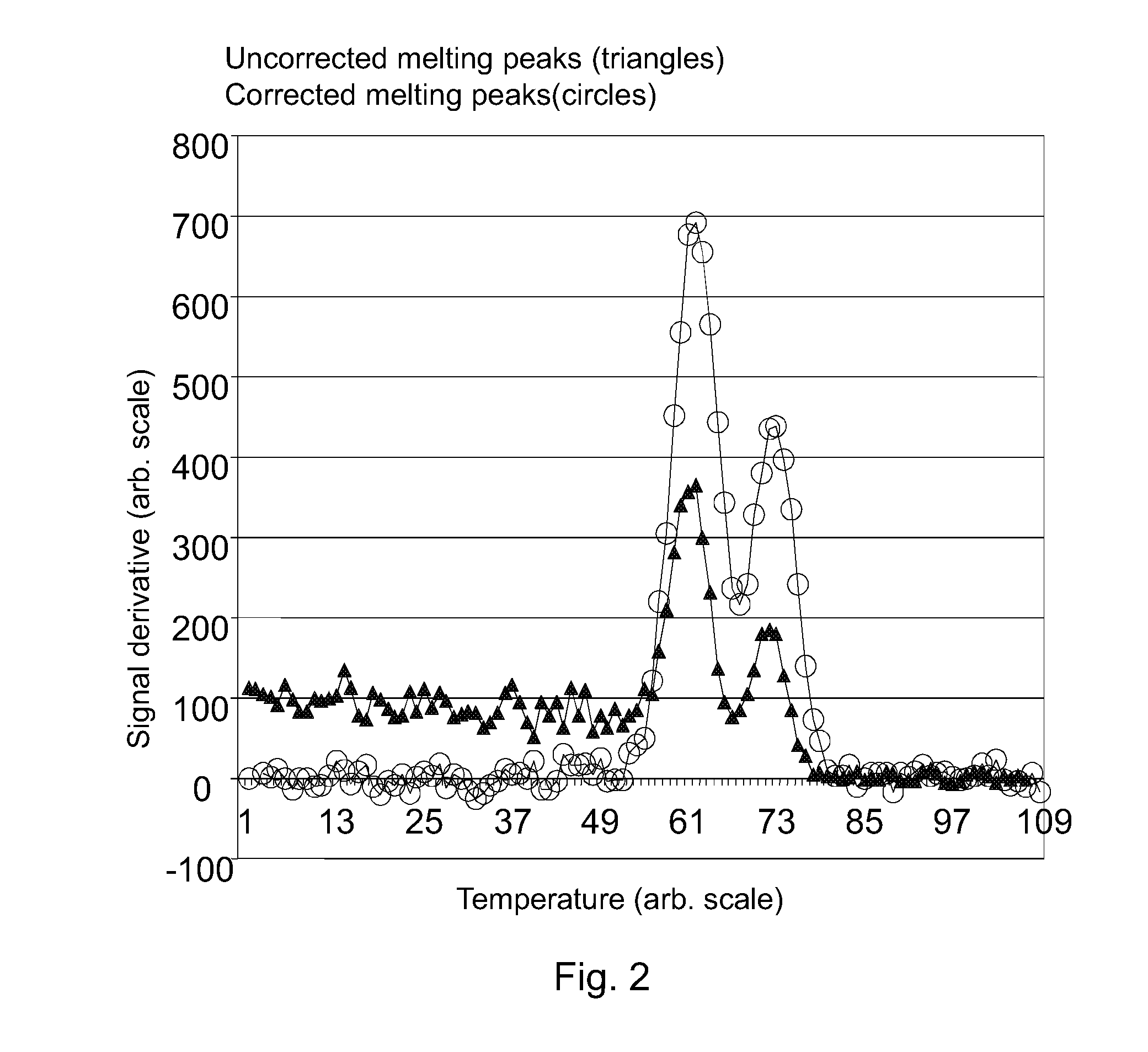Method, instrument and computer program product for quantification of PCR products
a technology of pcr products and instruments, applied in the field of nucleic acid melting curve analysis, can solve the problems of rna-expression analysis diagnostic tests, high technical requirements, and inability to accurately analyze the melting curve spectra, and achieve the effect of accurate analysis of melting curve spectra
- Summary
- Abstract
- Description
- Claims
- Application Information
AI Technical Summary
Benefits of technology
Problems solved by technology
Method used
Image
Examples
example
[0067]This example illustrates the various aspects of the invention by describing the main steps of a melting curve analysis wherein the sample contains two nucleic acids having different melting temperatures.
a) Correction of the Melting Curve
[0068]Below is presented an example of calculation of the correction from two separate temperature points on the melting curve using the principles disclosed above. Values of a pre-specified temperature range where no dissociation of specific nucleic acids occur are used for generating an optimal correction of the entire melting curve. Herein, T0=59.3 (° C.), corresponding to the starting temperature for recording of data in the measurement.
TABLE 1Example of correction of a measured melting curve (at non-dissociating region)pointTempFmeasdT(1 + K{circumflex over ( )}dT) / 2Fcorr 159.30.15360.15361262.20.13721362.50.13553.21.13280.15352465.80.11762566.10.11556.81.32490.1530
[0069]Table 1 demonstrates that using the optimized correction factor K in ...
PUM
| Property | Measurement | Unit |
|---|---|---|
| Temperature | aaaaa | aaaaa |
| Temperature | aaaaa | aaaaa |
| Temperature | aaaaa | aaaaa |
Abstract
Description
Claims
Application Information
 Login to View More
Login to View More - R&D
- Intellectual Property
- Life Sciences
- Materials
- Tech Scout
- Unparalleled Data Quality
- Higher Quality Content
- 60% Fewer Hallucinations
Browse by: Latest US Patents, China's latest patents, Technical Efficacy Thesaurus, Application Domain, Technology Topic, Popular Technical Reports.
© 2025 PatSnap. All rights reserved.Legal|Privacy policy|Modern Slavery Act Transparency Statement|Sitemap|About US| Contact US: help@patsnap.com



